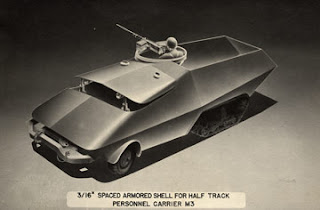
Radebaugh's brief studies at the Art Institute in Chicago (he “found the bright lights more interesting than classes”) led to his first experimentation with the airbrush.
He honed his technique with the airbrush while doing more mundane rendering for Crescent Engraving in Kalamazoo, Michigan: designing boxes for chocolate candy and the like.
One of the salesmen there saw Radebaugh’s airbrush work and asked if he could act as the young man’s agent; he probably surprised them both when he sold one of Radebaugh’s futuristic automotive renderings to MoToR Magazine in 1935 for $450.
After his first break, Radebaugh burst onto the commercial illustration scene, seemingly fully formed, and rapidly got work for Esquire, Fortune, Advertising Agency and other top-flight magazines.
His luminous Art Deco cityscapes complemented a sense of industrial design that was both pragmatic and prescient: he took what was cutting edge, from telephones to travel trailers, and made them more elegant, functional, and fantastical to behold.
His magazine work propelled him to some degree of recognition, and advertising art directors took notice not only of Radebaugh, but of the odd medium in which he worked, and began to respect airbrushing for the first time.
Radebaugh continued to do beautiful work for MoToR magazine, illustrating a special annual issue almost every year for over two decades.
This illustration was done for a leading advertising industry magazine in 1937. It shows off the vertiginously curving roadways and Art Deco style skyscrapers which became trademark Radebaugh motifs.

Radebaugh's rise as a commercial artist was interrupted by the US entrance into World War 2.
He was enlisted into the Army Ordnance Department, where he headed up a Design & Visualization division.
He worked with fellow artists and industrial designers (notably, Will Eisner was working in the same office!), designing weapons of the future.
Radebaugh’s tenure at the Pentagon seems to have allowed him to hone both his talent for futuristic designs and his penchant for the pragmatic. He helped to develop armored cars, bazookas and artillery for the Army.
He was also charged with developing a method of illuminating military vehicle instrument panels with blacklight, thereby helping to conceal war planes, tanks and trucks from enemies His involvement with the medium began a long obsession with blacklight and flourescent paints.








